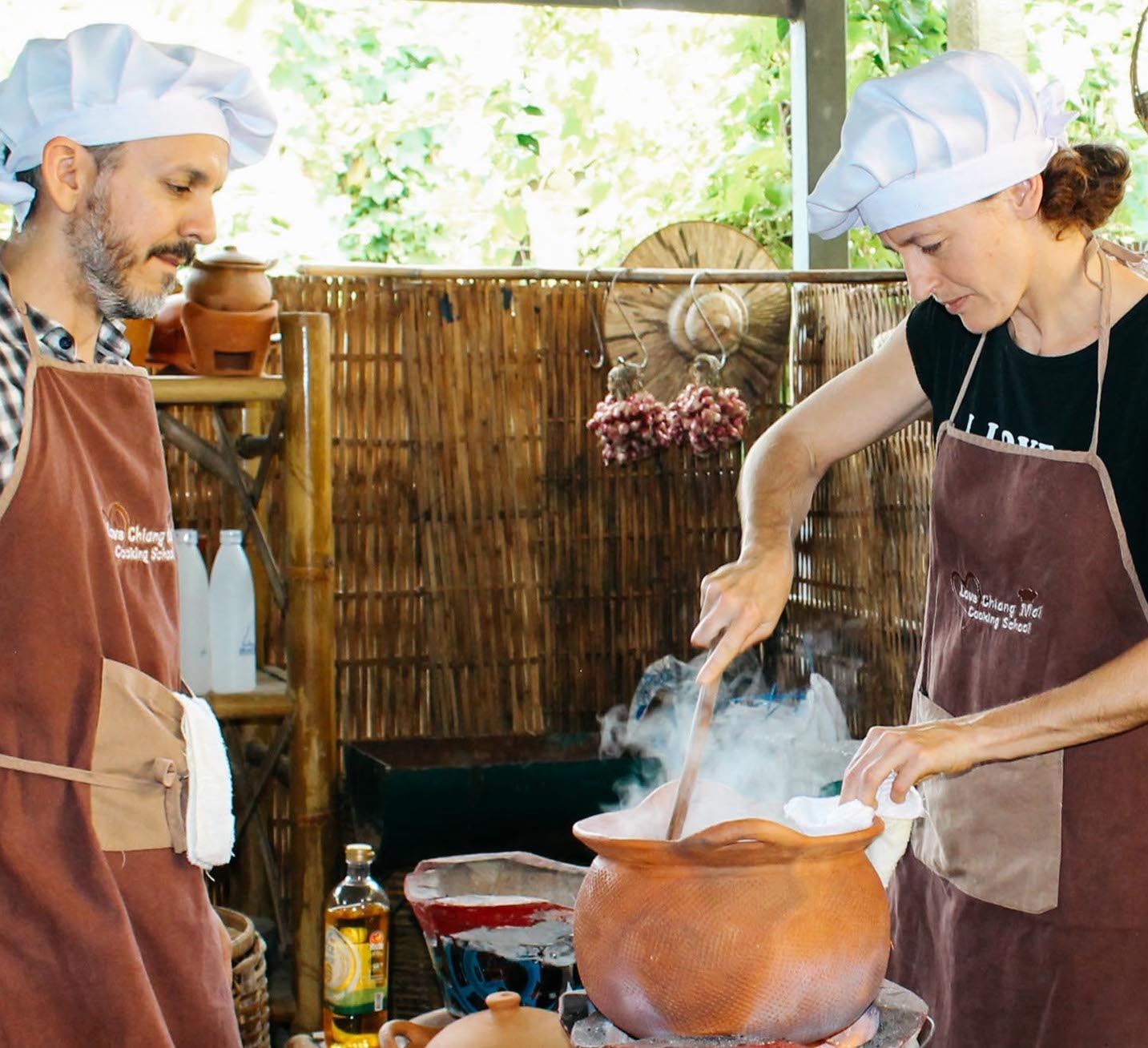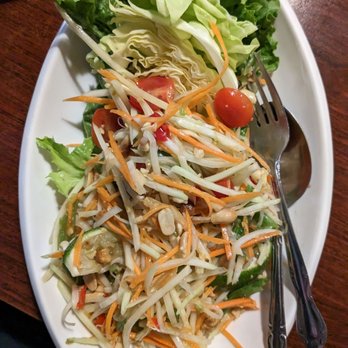The Concept Of Sa Bai Sa Bai In Thai Culture

The concept of Sa Bai Sa Bai is deeply ingrained in Thai culture and reflects the values of hospitality, relaxation, and contentment. Sa Bai Sa Bai embodies a sense of ease, comfort, and well-being, promoting a laid-back and easy-going attitude in daily life. It is commonly used as a greeting and expresses that everything is going well. Sa Bai Sa Bai creates a pleasant and relaxing atmosphere and encourages individuals to find joy and enjoyment in all aspects of life, aligning with the Thai concept of “sanuk.” By embracing Sa Bai Sa Bai, Thais aim to create a harmonious and welcoming environment for others.
The Meaning And Origin Of Sa Bai Sa Bai
Sa Bai Sa Bai is a phrase deeply rooted in Thai culture, symbolizing relaxation, contentment, and overall well-being. It is commonly used as a greeting and reflects the Thai value of hospitality. The word “sabai” translates to “happy” but encompasses a broader sense of ease and comfort. The origin of Sa Bai Sa Bai can be traced back to ancient Thai traditions and practices that prioritize harmony and balance in daily life. Embracing Sa Bai Sa Bai allows individuals to cultivate inner peace while creating a welcoming atmosphere for others.
Practicing Sa Bai Sa Bai In Daily Life
Incorporating Sa Bai Sa Bai into daily life involves embracing the Thai philosophy of relaxation and contentment. Individuals can start by prioritizing self-care and creating a peaceful environment in their homes. Taking time for personal reflection and engaging in activities that promote well-being can help cultivate a sense of inner peace. Additionally, practicing kindness and showing hospitality to others is an essential aspect of Sa Bai Sa Bai. This can be done by offering a warm smile, actively listening, and expressing gratitude. Overall, practicing Sa Bai Sa Bai in daily life enables individuals to create a harmonious and welcoming atmosphere for themselves and others.
Thai Hospitality And Etiquette

Thai hospitality is deeply rooted in the Thai culture, and it is characterized by warmth, friendliness, and generosity. Guests are often treated with utmost respect and are made to feel welcomed and comfortable. Thai people value politeness and proper etiquette, and they have specific customs and gestures that are used to show respect and gratitude. For example, the wai, a traditional Thai greeting, is performed by placing the palms of the hands together at chest level with a slight bow. It is important to reciprocate these gestures and show appreciation for the kindness and hospitality received.
Core Principles Of Thai Hospitality
The core principles of Thai hospitality revolve around warmth, friendliness, and genuine care for the needs and comfort of guests. Thai people believe in treating others with the utmost respect and making them feel welcomed and valued. The key principles of Thai hospitality include:
- Respect: Thai people show deep respect for guests, treating them as honored visitors and going above and beyond to meet their needs.
- Generosity: Thai hospitality is characterized by generosity and a willingness to share and provide for others.
- Politeness: Politeness is highly valued in Thai culture, and guests are treated with courtesy and consideration.
- Attentiveness: Thai people are attentive to the needs of their guests, anticipating their desires and ensuring their comfort at all times.
- Gratitude: Thai hospitality is accompanied by a sense of gratitude towards guests, expressed through gestures of appreciation and thankfulness.
Traditional Thai Customs And Gestures
In addition to the core principles of Thai hospitality, there are traditional customs and gestures that contribute to the unique experience of Sa Bai Sa Bai. One such custom is the “wai” gesture, which is a way of greeting, showing respect, and expressing gratitude. It involves placing both hands together with palms touching and slightly bowing the head. The “wai” is commonly used in various social interactions, such as when meeting someone for the first time, saying goodbye, or showing appreciation. This gesture reflects the emphasis on politeness and respect in Thai culture. It is important to note that younger individuals should initiate the “wai” to their elders as a sign of deference and reverence. By adhering to these traditional customs and gestures, visitors can fully embrace the essence of Thai hospitality.
(Source: )
Embracing Sa Bai Sa Bai In Tourism

Embracing Sa Bai Sa Bai in tourism is essential for creating authentic and memorable experiences for visitors to Thailand. By incorporating the core principles of Thai hospitality, such as kindness, respect, and attentiveness, the tourism industry can provide a warm and welcoming atmosphere for travelers. This includes training staff in customer service, promoting cultural understanding, and showcasing traditional customs and gestures. By embracing Sa Bai Sa Bai in tourism, Thailand can differentiate itself as a destination that values the well-being and satisfaction of its guests, resulting in a positive impact on the overall tourism industry.
Impact Of Sa Bai Sa Bai On Thailand’s Tourism Industry
Sa Bai Sa Bai has had a significant impact on Thailand’s tourism industry. By embracing the principles of Thai hospitality, tourists are greeted with warmth and kindness, creating a memorable and authentic experience. This has led to an increase in positive word-of-mouth and repeat visitors, contributing to the growth of the tourism sector. Sa Bai Sa Bai has also helped to differentiate Thailand as a destination that values the well-being and satisfaction of its guests. Overall, incorporating Sa Bai Sa Bai in the tourism industry has enhanced Thailand’s reputation as a premier travel destination.
Creating Memorable Experiences Through Thai Hospitality
Thai hospitality is not just about providing excellent service, but also about creating memorable experiences for guests. From the warm welcome upon arrival to the attention to detail throughout the stay, every aspect of Thai hospitality is designed to leave a lasting impression.
One way this is accomplished is through personalized service. Thai hospitality providers take the time to understand their guests’ preferences and needs, ensuring that every interaction is tailored to their individual desires. This level of attentiveness and care helps to create a special bond between the guest and the host, making the experience unique and unforgettable.
Another aspect of Thai hospitality that contributes to memorable experiences is the emphasis on creating a serene and welcoming atmosphere. From beautifully decorated spaces to soothing music and fragrances, every detail is carefully considered to create a sense of tranquility and relaxation. This allows guests to fully immerse themselves in the experience and leave their worries behind.
Additionally, Thai hospitality often includes surprises and unexpected gestures that go above and beyond the guests’ expectations. Whether it’s a special gift waiting in the room, a personalized note or a surprise upgrade, these small acts of kindness make a big impact and create lasting memories.
By incorporating these elements, Thai hospitality providers are able to create truly memorable experiences for their guests. The combination of personalized service, tranquil ambiance, and thoughtful surprises ensures that every guest leaves with a sense of warmth, happiness, and a desire to return.
Famous Thai Hospitality Examples

Famous Thai hospitality examples include renowned hotels and resorts that embody the Sa Bai Sa Bai philosophy. One such example is The Siam Hotel in Bangkok, known for its personalized service and attention to detail. Another is the Four Seasons Tented Camp Golden Triangle, which offers luxurious accommodations and unique experiences in the heart of nature. Celebrities have also praised Thai hospitality, with actress Elizabeth Hurley describing her stay at the Amanpuri resort as “unforgettable.” These examples highlight how Thai hospitality creates memorable experiences for guests and sets Thailand apart as a premier tourist destination.
Renowned Hotels And Resorts Embodying Sa Bai Sa Bai
Renowned hotels and resorts in Thailand are known for their embodiment of the Sa Bai Sa Bai philosophy. One such example is The Siam Hotel in Bangkok, which offers personalized service and attention to detail, ensuring a comfortable and relaxed stay for guests. Another notable establishment is the Four Seasons Tented Camp Golden Triangle, where guests can experience luxurious accommodations and unique activities in the heart of nature. These esteemed properties showcase the essence of Thai hospitality, providing guests with unforgettable experiences and creating a welcoming and peaceful atmosphere.
Celebrity Testimonials On Experiencing Thai Hospitality
Celebrities from around the world have shared their wonderful experiences of Thai hospitality. International superstar Hugh Jackman praised the warm and welcoming nature of the Thai people during his visit to Thailand. Actress Blake Lively mentioned the exceptional service and attention to detail she received during her stay in a luxury resort in Phuket. Chef Gordon Ramsay, known for his discerning palate, raved about the flavors and presentation of Thai cuisine. These testimonials from famous personalities highlight the genuine and heartfelt hospitality that visitors can expect when they embrace the Sa Bai Sa Bai philosophy in Thailand.
The Art Of Thai Cuisine In Sa Bai Sa Bai

In Sa Bai Sa Bai, the art of Thai cuisine plays a vital role in creating a truly memorable dining experience. Thai cuisine is renowned for its harmonious combination of flavors, textures, and aromas. The use of fresh ingredients, aromatic herbs, and spices is a hallmark of Thai cooking. From the world-famous Pad Thai to the fragrant Green Curry, each dish reflects the essence of Thai hospitality. In Sa Bai Sa Bai, the presentation of food is also given great importance, with intricate garnishes and carefully arranged plating. Thai cuisine embodies the spirit of Sa Bai Sa Bai by offering a feast for the senses, creating a truly unforgettable culinary journey.
Role Of Food And Dining In Thai Hospitality
Food and dining play a pivotal role in Thai hospitality, with the belief that a well-prepared meal can bring people together and create a sense of warmth and connection. Thai cuisine is characterized by its harmonious blend of flavors, including sweet, sour, spicy, and savory. The presentation of food is also given utmost importance, with intricate garnishes and careful plating. In Thai culture, sharing a meal is seen as a way to show respect and build relationships. The act of preparing and serving food is considered an expression of love and care, embracing the concept of Sa Bai Sa Bai in every bite.
Popular Thai Dishes Known For Their Hospitality
Thai cuisine is renowned for its flavorful and vibrant dishes that reflect the hospitality of the Thai people. Some of the popular Thai dishes known for their hospitable nature include:
- Tom Yum Soup: This iconic Thai soup is a combination of spicy, sour, and aromatic flavors, with ingredients like lemongrass, lime leaves, and chili peppers. It is often enjoyed as a shared dish, symbolizing the spirit of togetherness.
- Pad Thai: A beloved Thai street food, Pad Thai is made with stir-fried rice noodles, shrimp or chicken, bean sprouts, and a tangy tamarind sauce. It is a crowd-pleasing dish that showcases the harmonious blending of sweet, sour, and savory flavors.
- Green Curry: Known for its vibrant green color, Thai green curry is a spicy and creamy curry made with coconut milk, green chili peppers, and a variety of vegetables. It is traditionally served with jasmine rice, encouraging a communal dining experience.
These dishes not only exemplify the rich flavors of Thai cuisine but also embody the warm and welcoming nature of Thai hospitality.
Conclusion

In conclusion, Sa Bai Sa Bai is not just a concept in Thai culture, but a way of life that embodies hospitality, harmony, and togetherness. Through the practice of Sa Bai Sa Bai, Thais create a welcoming and warm environment, making visitors feel at home. This cultural value extends beyond personal interactions and is also reflected in the renowned Thai cuisine, which is known for its vibrant flavors and communal dining experiences. By embracing Sa Bai Sa Bai, individuals can enhance their daily interactions and create memorable experiences that promote unity and hospitality. So, let us all embrace Sa Bai Sa Bai and experience the true essence of Thai hospitality.
Benefits Of Embracing Sa Bai Sa Bai In Daily Interactions
Embracing Sa Bai Sa Bai in daily interactions brings a multitude of benefits. Firstly, it fosters stronger connections with others, as the emphasis on harmony and respect creates a positive and welcoming atmosphere. Secondly, practicing Sa Bai Sa Bai promotes effective communication, as individuals learn to actively listen and empathize with one another. This leads to better understanding and collaboration. Additionally, Sa Bai Sa Bai encourages a sense of mindfulness and relaxation, reducing stress levels and promoting overall well-being. By embracing Sa Bai Sa Bai, individuals can enhance their relationships, improve their communication skills, and cultivate a more harmonious and fulfilling daily life.
Implementing Thai Hospitality Practices In Various Cultures
Implementing Thai hospitality practices in various cultures is a wonderful way to enhance interactions and create a welcoming atmosphere. The principles of Sa Bai Sa Bai, such as respect, harmony, and mindfulness, can be universally applied to foster better relationships and communication. Embracing the concept of Sa Bai Sa Bai in different cultures allows for a deeper understanding and appreciation of diverse traditions. It encourages individuals to be more open-minded, empathetic, and considerate towards others. By incorporating Thai hospitality practices into different cultures, we can promote a sense of unity and create a more harmonious global community.
FAQ About “sa Bai Sa Bai: Embracing Thai Hospitality”
Q: What does “Sa Bai Sa Bai” mean in Thai?
A: “Sa Bai Sa Bai” is a Thai expression that conveys a sense of well-being, relaxation, and good vibes. It reflects the peaceful and welcoming nature of Thai hospitality.
Q: What can one expect from the experience of “Sa Bai Sa Bai”?
A: Participants can expect to immerse themselves in the rich culture of Thailand, including traditional Thai practices, customs, and hospitality. It’s a holistic experience that promotes relaxation, mindfulness, and inner peace.
Q: Is “Sa Bai Sa Bai” suitable for people of all ages and backgrounds?
A: Yes, “Sa Bai Sa Bai” is designed to be inclusive and welcoming to individuals of all ages and backgrounds. Whether you are a solo traveler, a couple, or a group, you can partake in the experience and embrace Thai hospitality.
Q: What are some of the activities included in the “Sa Bai Sa Bai” experience?
A: Activities may include Thai cooking classes, traditional Thai massage sessions, cultural performances, visits to local markets, meditation sessions, and opportunities to connect with the local community.
Q: How can one participate in the “Sa Bai Sa Bai” experience?
A: To participate in “Sa Bai Sa Bai,” individuals can book a package or program offered by organizers who specialize in promoting Thai hospitality experiences. These packages typically include accommodation, meals, activities, and guided tours to ensure a memorable and enriching experience.
Q: Is “Sa Bai Sa Bai” a sustainable and responsible tourism initiative?
A: Yes, “Sa Bai Sa Bai” advocates for sustainable tourism practices that respect the environment, culture, and communities of Thailand. Participants are encouraged to be mindful of their impact and to support local businesses and initiatives that contribute positively to the well-being of the region.

Madame Thai Cuisine is not just a restaurant; it’s a culinary journey through Thailand’s vibrant and diverse flavors. Our story began with a passion for sharing the authentic tastes of Thailand with the world. Situated in the heart of [location], Madame Thai Cuisine has been a beacon of Thai culinary excellence since [year of establishment]. Our commitment to using only the finest and freshest ingredients, combined with traditional cooking techniques, has earned us a reputation as a go-to destination for exquisite Thai dining.